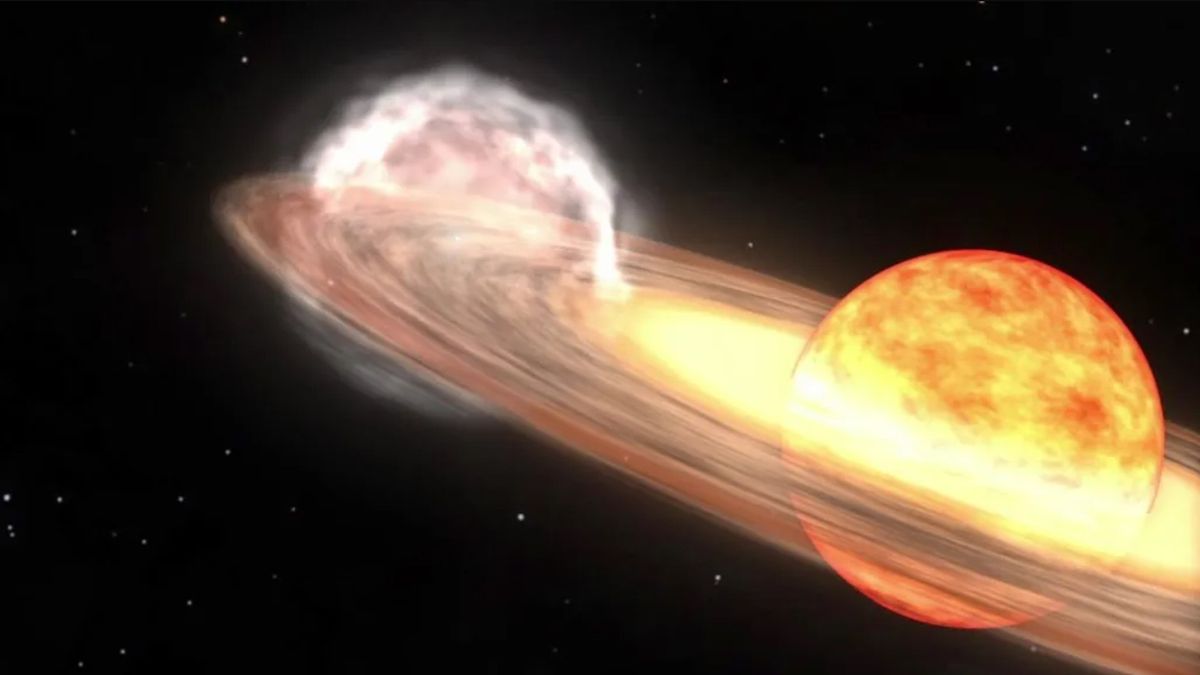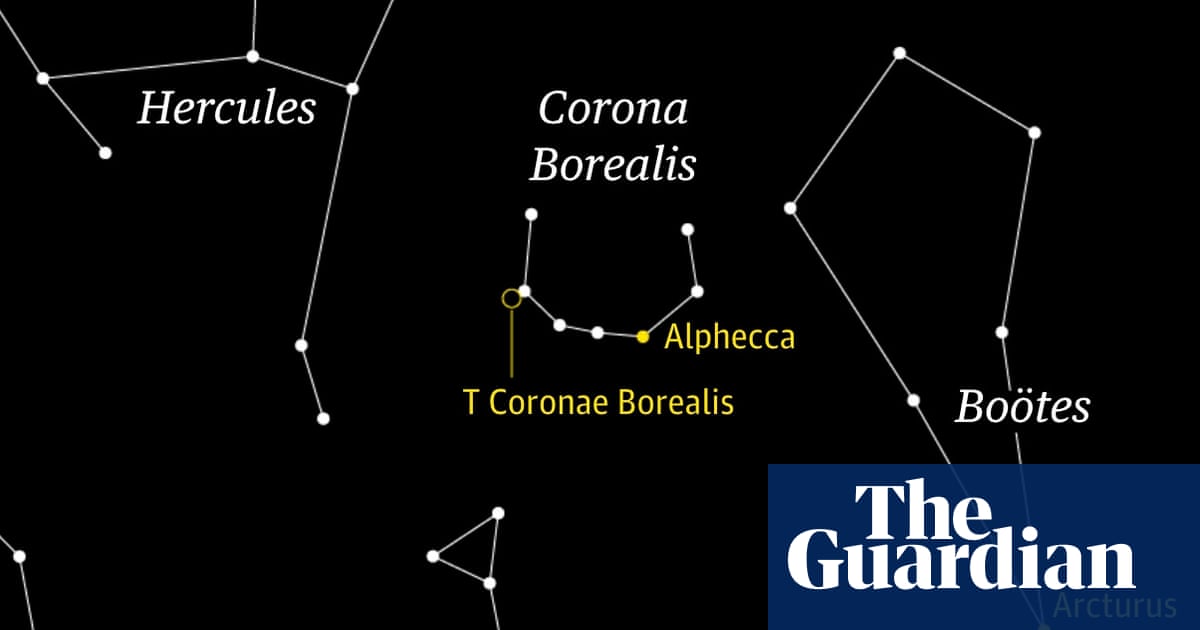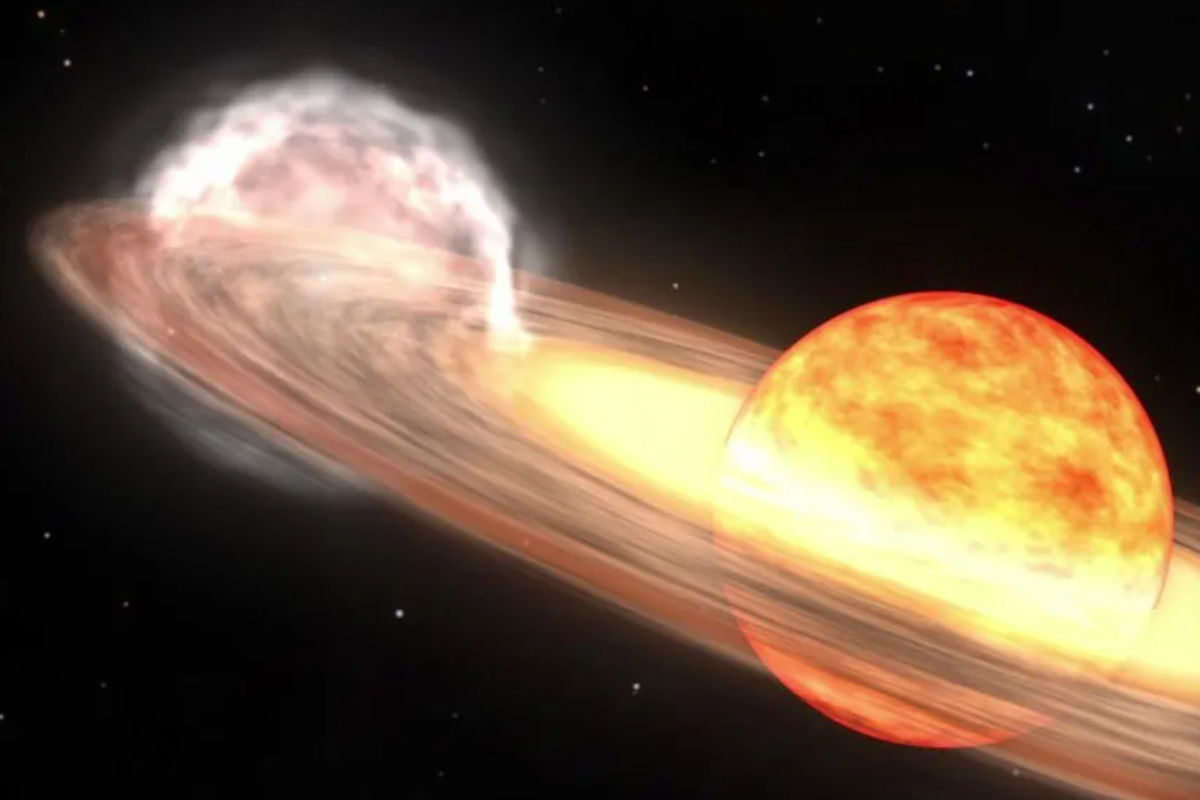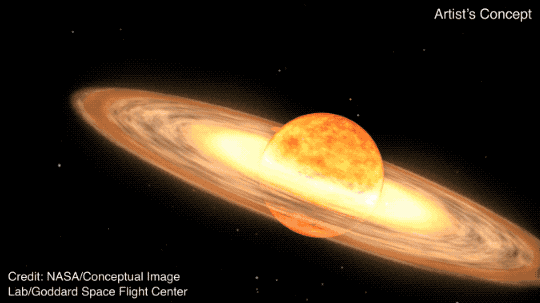The explosion of the star T Coronae Borealis (T CrB), a rare phenomenon last seen in the 1940s. This star is located about 2,600 light-years away and it is expected to become visible to the naked eye in the coming days or weeks.

Also Read: China’s Chang’e 6 Lunar Probe Returns with Samples from the Moon’s Far Side
T Coronae Borealis is a binary star system comprising a white dwarf and a red giant. Unlike a supernova, which is the end of a star’s life, a nova is a temporary brightening of a star.
T Coronae Borealis is a recurrent nova meaning it brightens periodically due to thermonuclear explosions on its surface.
The last recorded eruption of T Coronae Borealis occurred in 1946. The star’s brightness was documented as far back as the 13th century by Burchard, the abbot of Ursberg Abbey in Germany, who noted a faint star shining with great light in 1217.
This event is expected to inspire a new generation of astronomers, a rare opportunity to observe and study a stellar phenomenon that happens once in a lifetime for most people.
Advances in technology since the last eruption will allow researchers to gather more detailed data on the processes and structures within binary star systems.
The white dwarf in the T Coronae Borealis system accumulates material from the red giant leading to increased pressure and heat.
When the accumulated material reaches a critical mass, it triggers a thermonuclear explosion, increasing the star’s brightness.
T Coronae Borealis, typically a +10 magnitude star (invisible to the naked eye) is expected to brighten to +2 magnitude, comparable to Polaris, the North Star.
The star will be visible to the naked eye for several days and can be observed with binoculars for about a week thereafter.
Best Viewing Times:
- From London: Look south-south-west at around 2300 BST.
- From Sydney: The constellation will be highest in the sky, due north, around 2100 AEST. Find the Plough (Ursa Major) and follow its handle to locate Boötes. Look to the left to find the semicircle of Corona Borealis.
Observers are encouraged to sketch T Corona Borealis before and after the nova to document changes. Astronomy apps and binoculars will help locate and observe the star.
T Corona Borealis represents the crown given to Ariadne by Dionysus symbolizing a connection between the star and ancient stories.
Also Read: Tianlong-3: Chinese Rocket Crashes After Accidental Launch During Ground Test
Predictions indicate the nova could occur anytime from now until September 2024 with recent news suggesting it may happen within days or weeks.
T Coronae Borealis is a binary system located about 3,000 light-years away, comprising a white dwarf and a red giant.
Which is a one-time cataclysmic explosion marking the death of a star, a recurrent nova involves repeated outbursts due to the interactions between the two stars in the binary system.
The first recorded nova of T Coronae Borealis was in 1217. Subsequent eruptions were observed in 1866 and 1946 establishing a pattern of eruptions approximately every 79 to 80 years.
The white dwarf steadily pulls hydrogen from its red giant companion. Over time, this material accumulates on the surface of the white dwarf.
When the accumulated hydrogen reaches a critical mass, it triggers a thermonuclear explosion resulting in an increase in brightness.
A dimming or “pre-eruption dip” in brightness is often observed. This was noted in March 2023.
T Coronae Borealis is one of only five known recurring novae in our galaxy and is relatively close to Earth. Once the nova occurs, T Coronae Borealis is expected to shine with a magnitude between +2 and +3, making it visible to the naked eye for about a week.
The eruption will allow scientists to study the nova across various wavelengths unveiling new information about the processes involved in such stellar explosions.
T Coronae Borealis is situated in the constellation Corona Borealis, a small semicircle of stars located between the bright stars Arcturus and Vega.
To observe the nova, look towards the constellation Hercules in the northern hemisphere’s summer sky. The “Northern Crown,” where T Coronae Borealis is located should be easy to spot once the nova brightens.
The earliest recorded observation of T Coronae Borealis’s nova was made by German abbey leader Abbott Burchard, who described a faint star that briefly shone brightly.
The regularity of T Coronae Borealis’s eruptions over centuries has allowed astronomers to predict its cycles and anticipate the forthcoming explosion.
Familiarize yourself with the night sky and the location of Corona Borealis. Use apps or star maps to locate Vega and Arcturus, then find the semicircle of stars known as the Northern Crown.
Also Read: South African Scientists Inject Radioactive in Rhino Horns to Fight Poaching






















